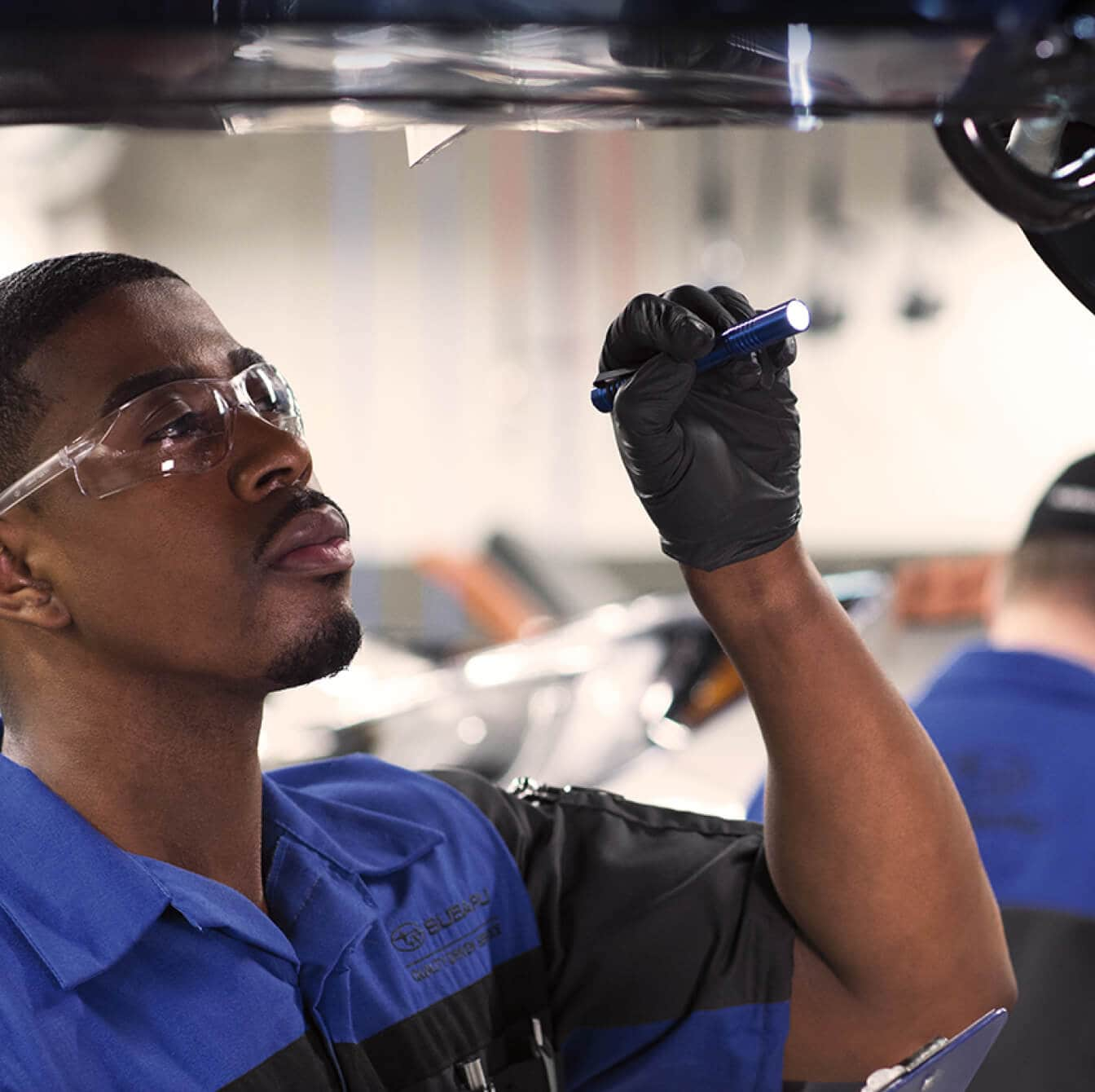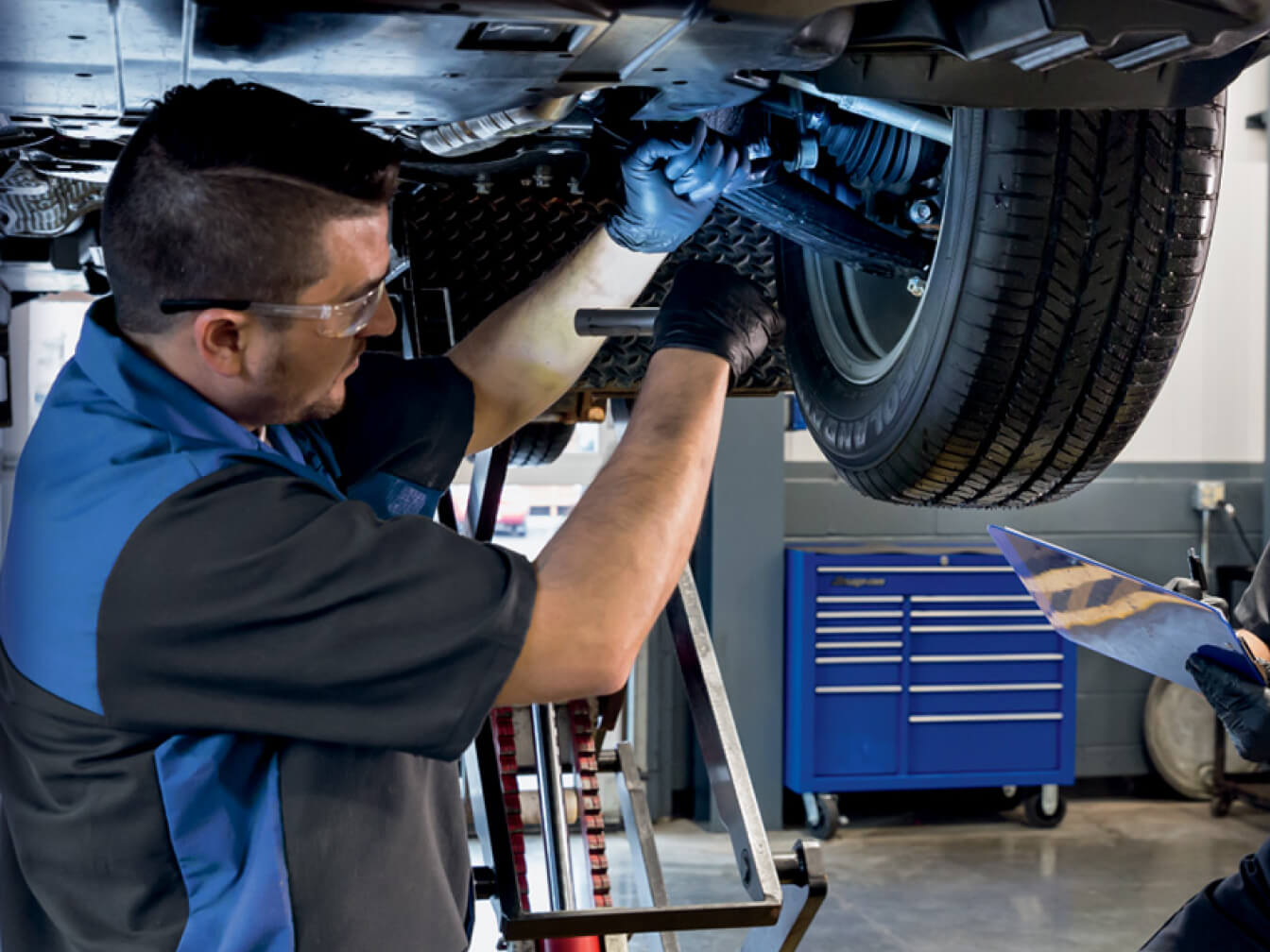
You can find the recommended Subaru tire pressure specs on the doorjamb of your vehicle. It will be located on a sticker somewhere near the door sills and will contain valuable information for your specific model. For general Subaru tire pressure information and tips, the Tom Wood Subaru team has made this guide covering seasonal changes, resetting a low tire pressure light, and more. Read on to get a better sense of your vehicle's tires.

Subaru Tire Pressure Guidelines
Generally speaking, the recommended Subaru tire pressure will be somewhere between 32 and 38 PSI (with a cold-tire reading). Always treat the sticker on your vehicle's doorjamb as the most authoritative pressure spec.
For example, the ideal Subaru Crosstrek tire pressure is 33 PSI front / 32 PSI rear when cold, while the ideal Subaru Outback tire pressure is typically 35 PSI front / 33 PSI rear when cold.
Trim levels can also have different tire pressure guidelines: The ideal base-trim Subaru Forester tire pressure is 36 PSI front / 35 PSI rear when cold, while the optimal Subaru Forester Wilderness tire pressure is 33 PSI front / 32 PSI rear on account of its special all-terrain tires.
While some trim levels of these models can have differing pressure guidelines, other cold Subaru tire pressure levels include:
- Subaru Solterra: 38 PSI front and rear
- Subaru Ascent: 35 PSI front and rear
- Subaru BRZ: 35 PSI front and rear
- Subaru Legacy: 33 PSI front / 32 PSI rear
- Subaru Impreza: 33 PSI front / 32 PSI rear
- Subaru WRX: 33 PSI front / 32 PSI rear
Cold vs. Hot Subaru Tire Pressure Readings - Why It Matters
In every vehicle from our new Subaru inventory, the required tire pressure listed on the doorjamb and owner's manual is a "cold" reading. This simply means that you should check the Subaru tire pressure before driving your car or after it has sat and cooled down for a few hours.
Seasonal temperature changes can also affect tire pressure. If you fill your tires on the hottest day of summer, winter's arrival could activate the Subaru low tire pressure light.
Per the official Subaru tire pressure guidelines, adjust the tire pressure by one PSI for every 10 degrees Fahrenheit of consistent temperature change (add pressure for decreasing temperature, and remove for increasing temperatures).
Why Does Subaru Tire Pressure Matter?
Maintaining ideal Subaru tire pressure leads to a worry-free drive with smooth and confident handling. Low Subaru tire pressure can create dramatic rolling resistance, which will reduce your MPGs in the best-case scenario or cause the tires to rip apart in the worst case. Your tires will wear down much faster than normal with improper pressure. An over-inflated tire is equally bad, as it creates dangerously low levels of traction and increases the chances of a tire blowout.
The Subaru Tire Pressure Warning Light
The Subaru tire pressure light involves a sensor in each tire, which sends a reading to the vehicle's central computer. If the pressure reading is too low, the Subaru tire pressure sensor will activate a low tire pressure warning. You often don't even have to schedule service, as this can be caused by the seasonal changes mentioned earlier.
If the low Subaru tire pressure warning returns, there likely is a puncture or issue in the tire, and a replacement or repair is necessary. Our service specials can help make that easier and more affordable.
Please note, this warning often only activates for low pressure and does not always instantly react to pressure changes. Manually check your tire pressure once a month to ensure everything is up-to-spec.
Subaru Tire Pressure Reset
After filling the tires to the correct level, simply drive the vehicle above 20 mph, and the Subaru tire pressure monitor will automatically check the tire pressure and deactivate the warning light if the correct pressure is present.
If this does not work, please contact us and schedule a tire inspection, as one of the four sensors may be malfunctioning, or your tires may have deeper issues.
Subaru Tire Pressure Tips
Manually checking your Subaru tire pressure is easy, and so is adjusting it.
Grab a tire pressure gauge, uncap the tire valve stems, and attach the end of the pressure gauge to the exposed valve stem. Your Subaru tire pressure gauge likely has a pressure relief valve to "air out" the tires to the desired pressure if they are over-inflated. When filling your tires, be sure to stop and check the pressure with your pressure gauge frequently.
We recommend that most drivers have their tire pressures checked and adjusted at a Subaru service center like ours during regular maintenance services. For Subaru tire pressure help and all your tire servicing needs, contact Tom Wood Subaru today.
Frequently Asked Questions
What is the normal tire pressure for a Subaru?
The normal Subaru tire pressure will vary by model and the specific configuration of the model. Typically, though, the normal tire pressure of a Subaru vehicle will be between 32 and 38 PSI. As an example, a Subaru Forester Base will have a normal tire pressure of 36 PSI for the front tires and 35 PSI for the rear tires when they are cold.
How do you check tire pressure on a Subaru dashboard?
If your Subaru vehicle is equipped with the Tire Pressure Monitoring System (TPMS), you can check the tire pressure on your dashboard by scrolling through the screen modes by using the steering wheel controls. This process applies to the 2024 Subaru Crosstrek. The details can vary depending on the model of the vehicle; check your owner's manual for precise instructions.
How do you reset the Subaru tire pressure light?
Once you've adjusted your tire's pressure to the correct level, drive above 20 mph, and the Subaru tire pressure light should reset itself and turn off. If it doesn't, recheck the tire pressure manually. If the tire pressure is correct but the light won't go away, contact an authorized Subaru service center for help, as the tire pressure sensors may be damaged.
Customer Reviews Of Tom Wood Subaru's Service
Smooth transaction, everything was completed within the day and i got a loaner to drive to and from work (big plus that tom wood does this, this is why i return). Replaced all four tires under a 4 for price of 3 deal. One of my old tires still had good tread on it and Brandon was kind enough to package it up for me for use in the future, if needed.









